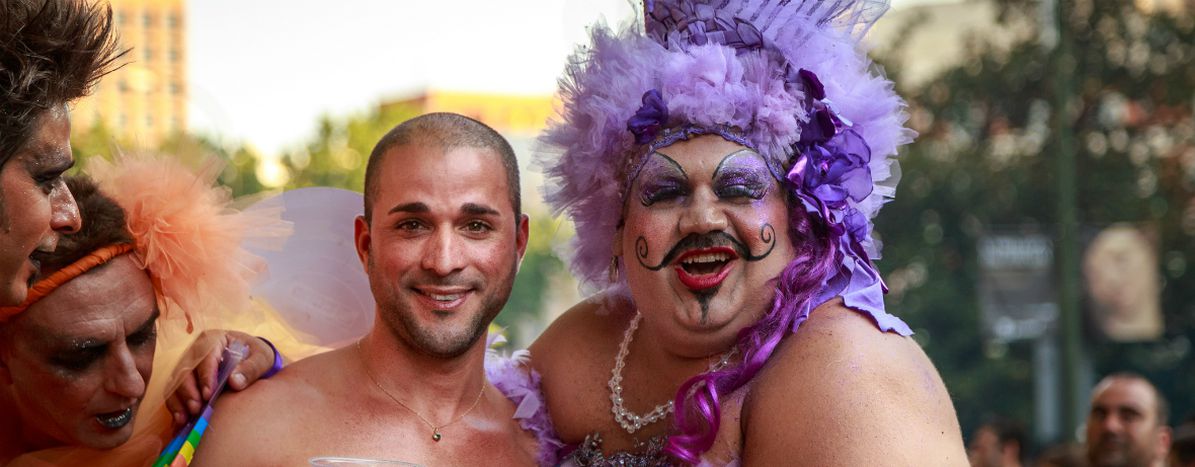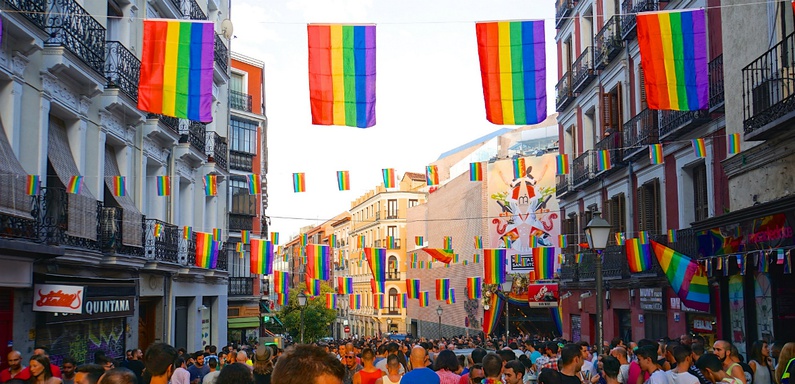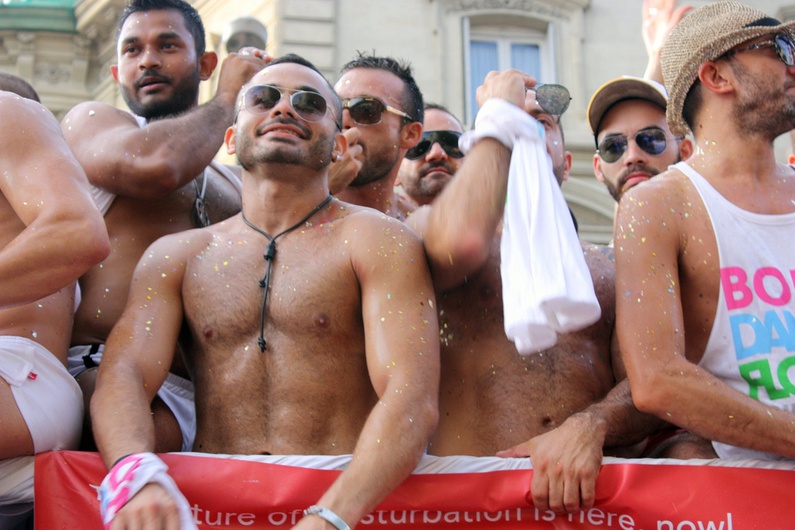
MADRID PRIDE: A COLOURFUL HISTORY
Published on
Translation by:
Asha RayAs many as two million people will proudly celebrate their love on Saturday 1st June in Madrid. In recent years, the Spanish capital has become a major epicentre of LGBT rights. However, it has not always been this way.
World Pride: people with a sexuality that challenges the heteronormative archetype gather for a good time on the streets of the Spanish capital, which are decked with colourful flags and traffic lights displaying figures of same-sex couples holding hands. It would be incredibly simplistic to focus just on the meaning of the initials LGBT (an acronym for Lesbians, Gays, Bisexuals and Transexuals). Likewise, it would be far too simplistic to think about this festival merely as a party, especially since it has not always been so easy for these individuals to express themselves as they would like.
It is important that an economic impact of three hundred million euros, two million tourists and huge international media attention does not distract from the fact that this historic celebration began in an area associated with drugs, prostitution and depression. The Madrilenian neighbourhood of Chueca is unrecognisable today, compared with the seventies.
 During this time Madrid was relishing in its first taste of democracy after forty years of being hidden in the closet of the dictatorship. The already extensive gay community, who in many cases were fleeing from the more conservative corners of Spain, sought a place to settle. The low prices of the Justicia area, better known today as Chueca, encouraged thousands of people of diverse sexualities to revive the neighbourhood, giving rise to businesses and an entirely new feel.
During this time Madrid was relishing in its first taste of democracy after forty years of being hidden in the closet of the dictatorship. The already extensive gay community, who in many cases were fleeing from the more conservative corners of Spain, sought a place to settle. The low prices of the Justicia area, better known today as Chueca, encouraged thousands of people of diverse sexualities to revive the neighbourhood, giving rise to businesses and an entirely new feel.
However, it was not the capital that hosted the first major claim of these groups in Spain. Barcelona, closer to France and therefore closer to the open mindedness of other European countries, was the pioneer in the transformation towards a new, democratized Spain. Around 4,000 people gathered on 26th June 1977 to demand the end to discrimination on the grounds of sexual orientation, at a time when homosexuality was still a crime.
Pride vs the law
The 1970 law of "Social Dangers and Rehabilitation" attenuated but did not revolutionise the "Vagrancy Act," which prevented the sexual freedoms of citizens, as well as imposing other restrictions. It was not until 1979, under Adolfo Suárez and the Unión de Centro Democrático, that this legislation was modified to abolish articles which condemned "acts of homosexuality".
Four years later the demands of homosexual groups were addressed and the law against public scandal was annulled. In 1995, the law of social dangers was abolished and this laid the groundwork for a new era of sexual visibility in Spain. In the same year, the Penal Code deemed any act of agression motivated by sexual identity or orientation unlawful.
The pioneering demonstration in Barcelona was disbanded, but paved the way so that in 1978, after years of poorly attended demonstrations, 7,000 people congregated in Madrid, along with marches taking place in Seville, Barcelona and Bilbao, to make the proud voices of Lesbians, Gays, Bisexuals and Transexuals heard. Since then, with the exception of its banning in 1980, LGBT Pride has been expanding throughout the capital and spreading outside the boundaries of Chueca.
From protest to celebration
The social and political liberation of this group led to a phase which saw Madrid at last breaking apart from the yoke of repression. In 1986, la calle Pelayo (a major street in Chueca) welcomed a more festive alternative to demonstration. These celebrations reached as far as Gran Vía and Puerta del Sol (two of the most symbolic public spaces of the Spanish capital). The true milestone of this more cheerful tone came ten years later thanks to the LGBT magazine, Shangay, which organised the first ever float to parade along this route, accompanied by 3,000 people, and amplified the impact of Madrid Pride.
The 21st century has only further spread LGBT culture across Spain. In 2005, the socialist governnment of José Luis Rodríguez Zapatero legalised gay marriage, generating euphoria throughout the community. Hundreds of thousands of people took to the streets, inundating Chueca and making it the most colourful June in the city's history. Europride, celebrated in 2007, affirmed Madrid's status as a European and international reference point for gay pride, with the participation of hundreds of associations, a parade of forty floats, and over a million attendees.
 Since then, June after June, the city stands as a banner of equality for the LGBT community. As the number of people proudly celebrating freedom of sexual identity is set to exceed two million, Chueca can now reflect on how the rainbow flag has colonised every corner of Madrid since its beginnings in a marginal area. 2017 marks the 40th anniversary of that disbanded demonstration in Barcelona: four decades of evolution and revolution in a country that is only just beginning to learn the background of four seemingly simple letters.
Since then, June after June, the city stands as a banner of equality for the LGBT community. As the number of people proudly celebrating freedom of sexual identity is set to exceed two million, Chueca can now reflect on how the rainbow flag has colonised every corner of Madrid since its beginnings in a marginal area. 2017 marks the 40th anniversary of that disbanded demonstration in Barcelona: four decades of evolution and revolution in a country that is only just beginning to learn the background of four seemingly simple letters.
Madrid is already ready and raring to accomodate the wave of visitors and the inevitable economic and cultural impact they will bring over the course of an unparalleled Pride Week. Let no glance be cast towards the trees, traffic lights, crowded streets or colourful flags without at first appreciating how, through pride and struggle, we have managed to plant a forest which nobody, we hope, will be able to cut down.
__
On Saturday 1st June, World Pride will be celebrated in Madrid.
Translated from El Orgullo de una ciudad: Madrid a través del arcoíris



